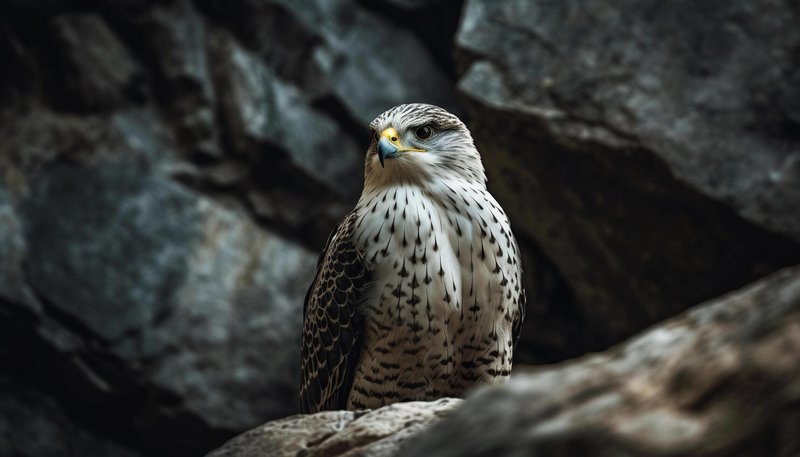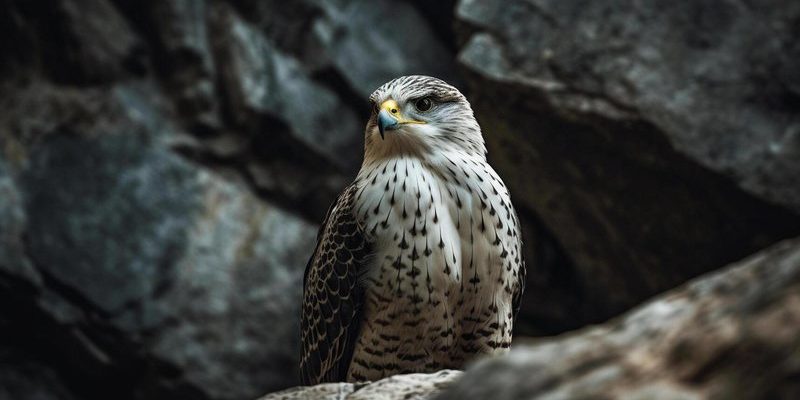
Imagine the intricacy of a family tree—one branch diverging into many, each representing a different species of falcon. Through countless adaptations, these birds have become some of the fastest and most skillful hunters on the planet. This journey through time reveals not just the characteristics of falcons, but also how they fit into the broader tapestry of life on Earth.
Understanding Falcon Classification
Falcons belong to the family *Falconidae*, and they share this group with other birds of prey. Within this family, there are about 60 species of falcons. Unlike some birds that are divided into many families, falcons have a more straightforward classification. This largely comes down to their physical features and, fundamentally, their hunting prowess.
The most well-known of these species is the *Peregrine Falcon*, recognized for being the fastest bird in the world. When diving to catch its prey, it reaches speeds over 240 miles per hour! This remarkable hunting ability is a clear indicator of the evolution that has equipped falcons for survival. But what about their ancestors? How did they evolve these remarkable traits?
The Origins of Falcons
Going back millions of years, falcons trace their lineage to the *early birds* that emerged after the age of dinosaurs, around 60 million years ago. These early ancestors were likely similar to modern-day raptors, yet they had unique adaptations that would set them apart. Over time, they evolved to become more agile and efficient, which played a crucial role in their survival.
You might be wondering how these modifications took place. Natural selection, a process first articulated by Charles Darwin, played a significant role. Birds that could fly faster or hunt better would outcompete their slower relatives, leading to a gradual evolutionary shift. This process ensured that the traits favorable to survival were passed on to future generations.
Key Adaptations in Falcon Evolution
The evolution of falcons is marked by several key adaptations that have made them exceptional hunters. One prominent feature is their *aerodynamic body shape*. Their sleek form allows them to cut through the air with minimum resistance. Coupled with their long wings and tail feathers, falcons can maneuver through tight spots and execute sharp turns when chasing prey.
Another vital adaptation is their keen eyesight. Falcons possess extraordinary vision that allows them to spot a small rodent from great heights. Their eyes are uniquely structured to focus quickly and see a wider spectrum of colors. This exceptional sight has played a critical role in their hunting strategies and success.
But there’s more! Falcons also have a specialized *beak* designed for tearing flesh. The hooked shape of their beaks enables them to grip and devour their prey efficiently. This combination of adaptations not only makes falcons formidable hunters but also showcases the beauty of evolutionary processes at play.
Falcon Species Diversity
While many people can name one or two species of falcons, the diversity within this family is remarkable. From the tiny *American Kestrel*, which is just a footlong, to the formidable *Gyrfalcon*, which can grow to be nearly two feet long, there’s a wide range of sizes and habitats. Each species has developed unique traits that allow it to thrive in different environments.
For instance, the *Saker Falcon* has adapted to life in arid regions and is known for its strong build and adaptability. In contrast, the *Merlin*, a smaller species, often hunts in open fields and relies on its speed and agility to catch smaller birds mid-flight. The nuances of each species highlight the dynamic nature of evolution and how falcons have diversified based on their surroundings.
The Role of Falcons in Ecosystems
Falcons play a vital role in their ecosystems as predators. By controlling the populations of small mammals and birds, they help maintain the balance of nature. If falcon populations decline, the increase in prey can lead to overgrazing or other ecological imbalances. This interplay of predator and prey highlights the interconnectedness of species within ecosystems.
In addition to their ecological role, falcons have also become symbols of freedom and power in many cultures. They are often used in falconry, a practice with a history that dates back thousands of years. This not only shows their value to humans but also emphasizes their impressive hunting skills and the close relationship they have formed with people over time.
Conservation and Future of Falcons
As we look to the future, it’s important to recognize that many falcon species face threats due to habitat loss, climate change, and human activity. Conservation efforts are critical to ensuring that these magnificent birds continue to thrive. Programs focused on habitat protection and recovery have shown promise in some areas.
Organizations and researchers work to monitor falcon populations and educate the public about their importance. By fostering a better understanding of falcons and advocating for their protection, we can help preserve their evolutionary legacy and ensure they remain a part of our natural world.
The *evolutionary history of the falcon* is a testament to the incredible adaptability of life. From their origins millions of years ago to the remarkable adaptations that define them today, falcons embody the spirit of survival. They remind us of the beauty of nature and the importance of protecting it.
As we appreciate these striking birds soaring in the sky, let’s also reflect on our role in their future. By understanding and valuing the complexity of their evolution, we can work together to ensure that falcons continue to grace our skies for generations to come.

